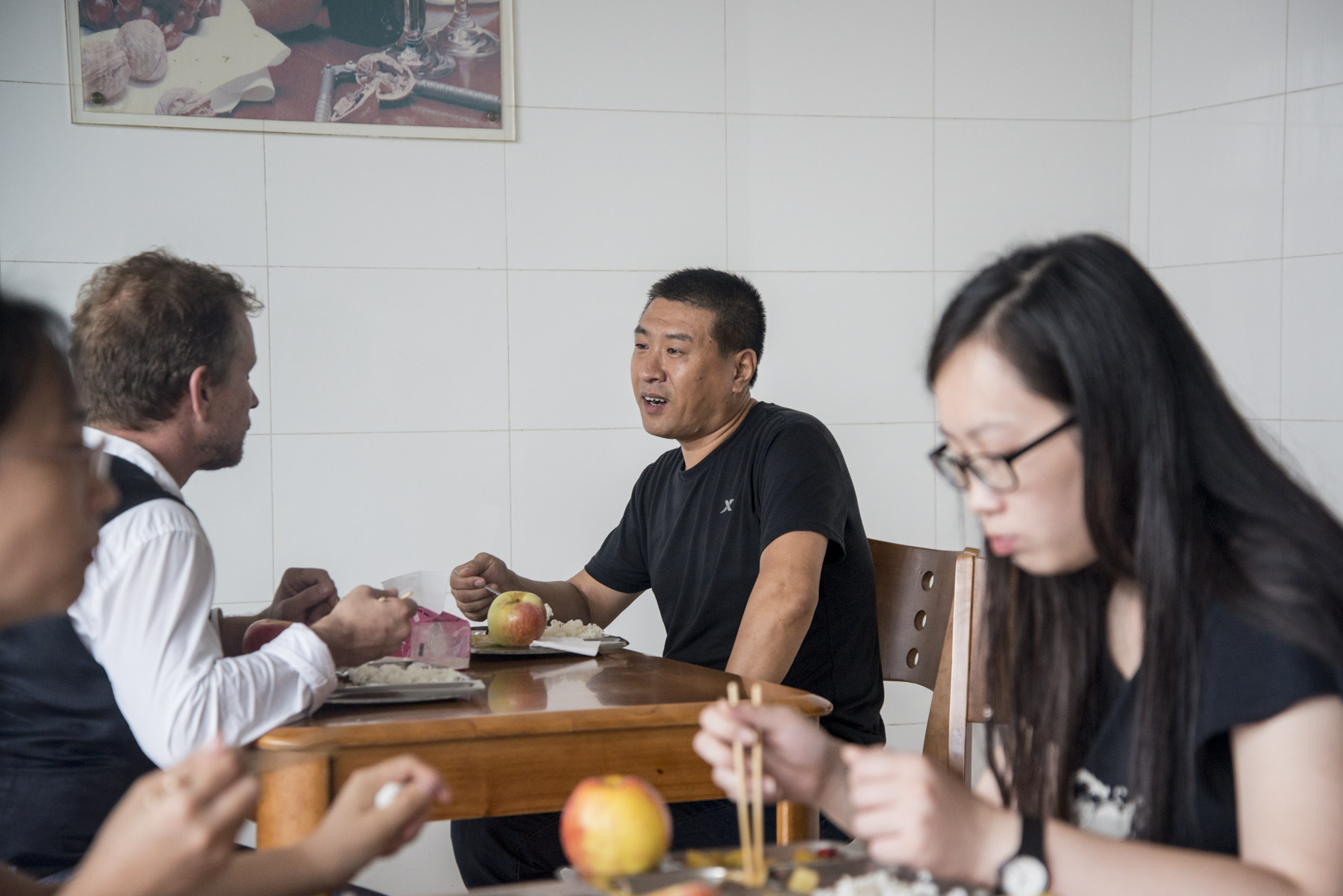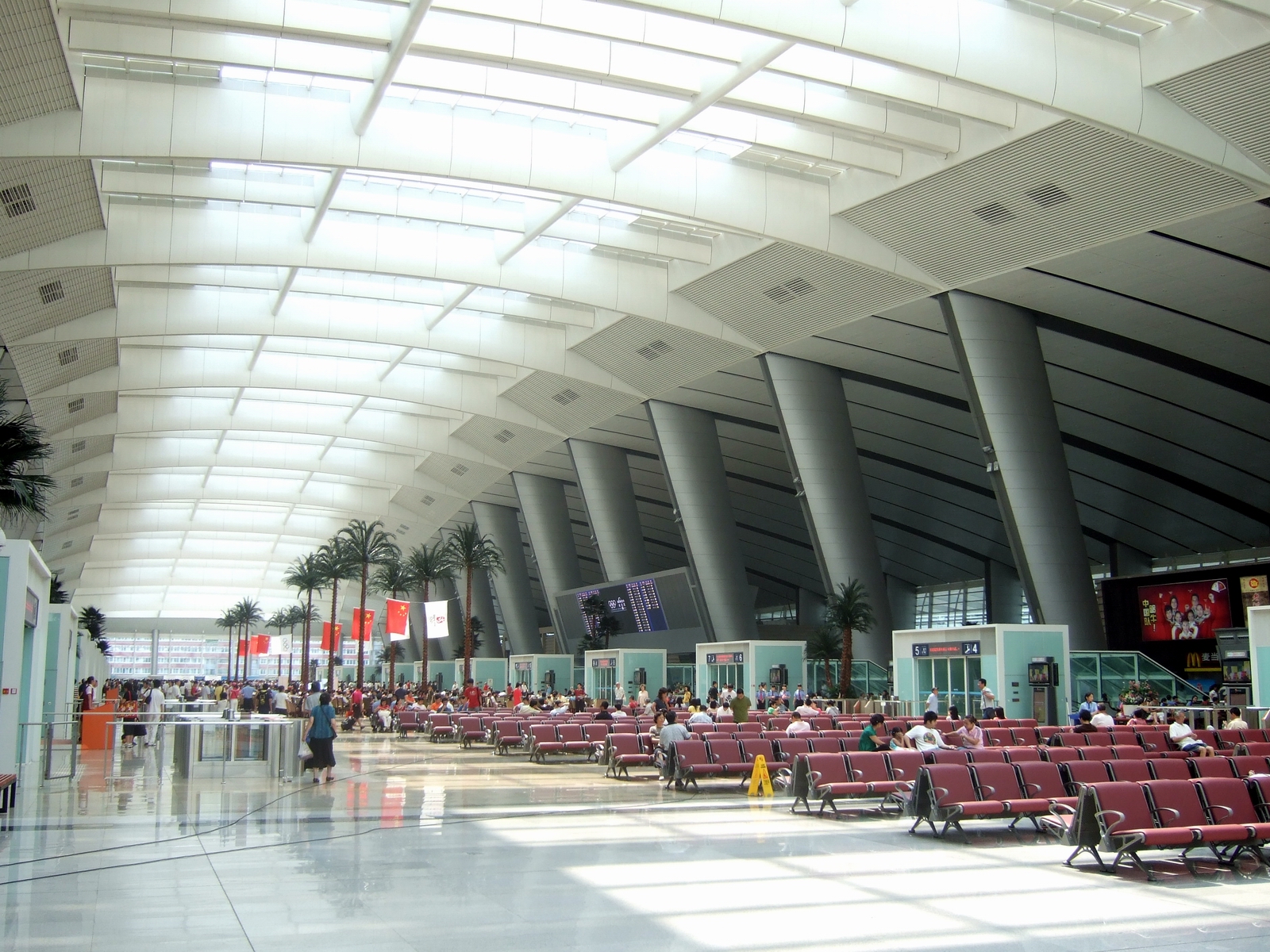Postcards from the largest train station in the world
Journalist Justus Krüger sets out on a journey from Beijing to visit Primafila’s client Bystronic in Tianjin.

Text: Justus Krüger, Primafila correspondent in China
Photo above: Shawn Koh
In fact, I am not quite sure whether the Beijing South Station really is the largest in the world, but it certainly seemed that way to me when photographer Shawn Koh and I met there one morning to catch the train to Tianjin. We were going to make a profile of Dong Cunyi, Bystronic’s Financial Director there, but first I had to find Shawn in the station.

The first time I went to Beijing South is a while ago, in 2001. At that time, it was a small, almost rural looking station on the outskirts of town, the kind of place where kindly grannies sell you boiled eggs and other snacks before you get on the train, and where farmers may get on board accompanied by a bunch of chickens and perhaps the occasional goat. The station had six tracks or so, with slow trains, designed when the Soviet Union was still going strong, huffing and puffing at a leisurely pace — nice travelling, if you have the time.

The next time I went, not sure anymore how many years ago, Beijing South had grown to about 60 tracks. No more chickens, no more boiled eggs, instead plenty of steel and glass and a gigantic structure the proportions and atmosphere of which were closer to a large, new airport than to the village station of yesteryear.

The people looked different, too. Less proletarian, less rural, more middle class and business-like. And the old fashioned trains had morphed into high-speed planes on wheels. 15 years ago, the trip to Tianjin would have taken at least half a day. Now, travel time was down to 35 minutes, less than an average subway commute to work in Beijing. What this means is that Tianjin, a city of about 15 million people, has for many practical purposes become a part of Beijing.

Even though I’d been in the large new version of Beijing South a couple of times, I was still astonished by it, and it took me a while to find the ticket counter where I was to meet Shawn. 15 years ago, he was still in high school in Singapore, so he wouldn’t know what the place used to look like.
Tianjin, even though it’s a big city, is a lot calmer than Beijing, and of course, this is especially so in that part of town where all the factories and offices are, including those of Bystronic. Still, in spite of all the tranquility in Dong Cunyi’s Tianjin office and in his home, it occurred to me that he and his colleagues at the machine tool factory had contributed something to transformation that Beijing South went through. And that’s the kind of transformation that is characteristic of all of China.
Recent Posts
- Memorial Concerts “79 Roses” 05/12/2024
- Desire: The Carl Craig Story – Documentary, Music, Biography by Jean-Cosme Delaloye 29/04/2024
- Correspondent Jean-Cosme Delaloye also makes documentaries 14/02/2024
- American Express Previews: Gentlemen’s Sports 02/04/2019
- American Express Previews: Tennis & Golf 02/04/2019
